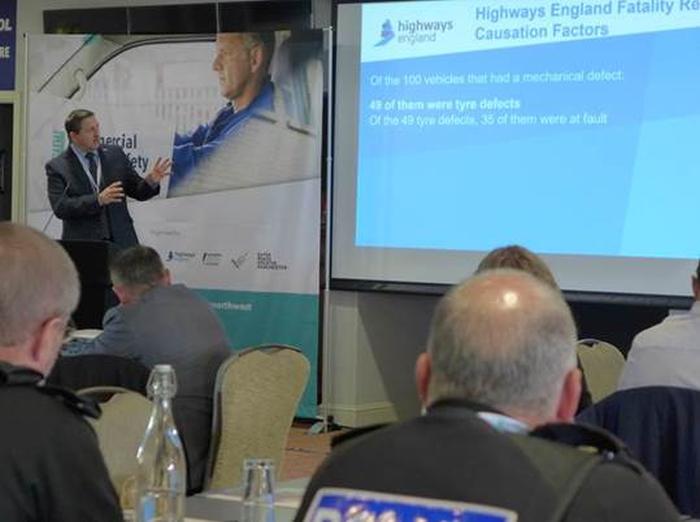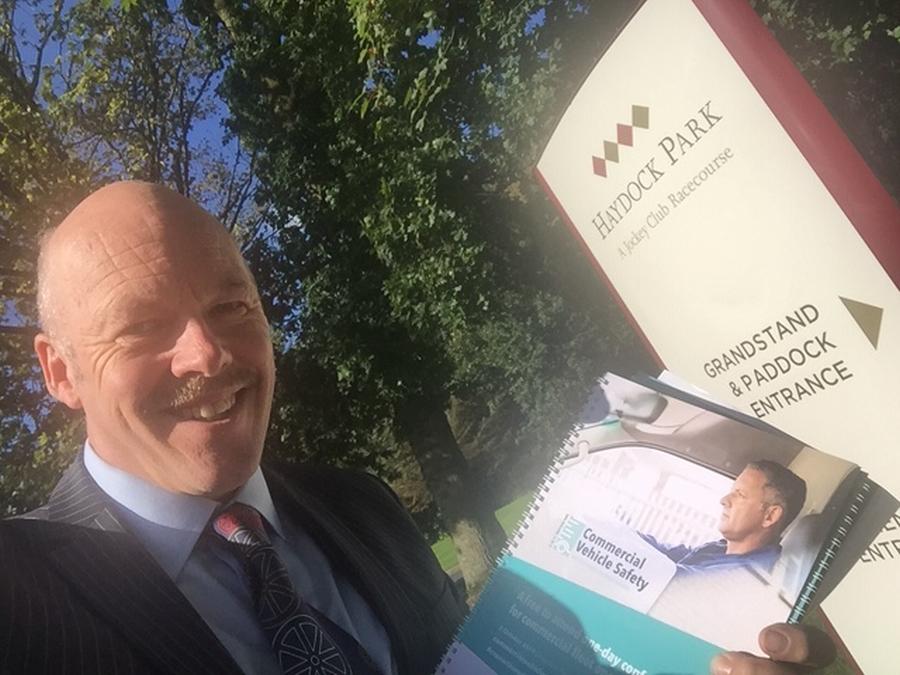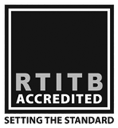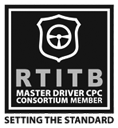Commercial Vehicle Safety: North West Challenges & Opportunities
‘Commercial Vehicle Safety: The Challenges & Opportunities’
Logistics Skills Alliance were in the North West for the Highways England road safety summit.
Education and safety are at the heart of the road safety ethos of the commercial drivers working in logistics.
Many of the core value training opportunities lie in the new logistics trailblazer qualifications; they are free under levy for your drivers and ready for delivery.
LSA Chairman Carl Lomas got the keynotes from Haydock Park for the LSA web news, getting the logistics message out to the sector.
Highways England Conference for commercial vehicle fleet operators across the North West to improve road safety and cut collisions and casualties on the region’s roads had square tables of ten in the premier suite of the horse track.
TfGM in strength at the exhibitor area. The conference - titled ‘Commercial Vehicle Safety: The Challenges & Opportunities’ - set out to understand the issues behind the casualty statistics, and provide a set of tools and resources to help fleet operators from van to HGV improve their safety performance and reduce collisions.
Opening keynote by Richard Leonard.
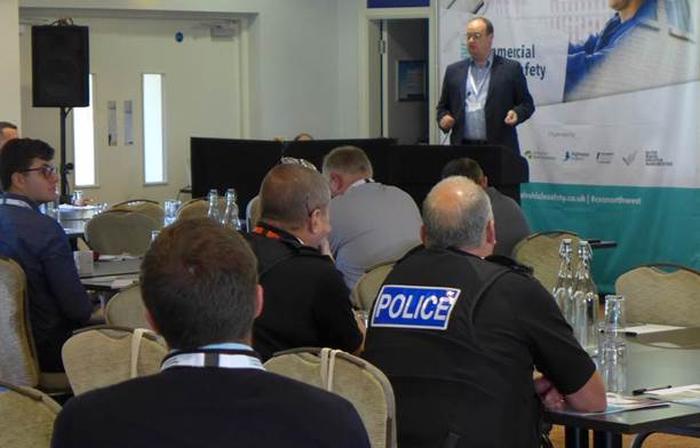
Richard Leonard, Head of Road Safety, Safety, Engineering & Standards, Highways England.
Presentation: Delivering a Safer Network – A Collaborative Approach
‘My view of commercial vehicles, we need to improve understanding, dealing with compliance and sharing best practice to prevent occurrence of incidents occurring.’
‘Collaboration is really important to safety, small things make a difference, van numbers are growing, light commercial vehicles are growing, our key focus is KSIs and improving safety.
13.2 HGV billion miles driven last year on the strategic road network. 1.8 billion HGV miles driven in the North West, blind spots are the key issues for incidents.
Getting knowledge- commercial vehicle programme case studies have reached sixteen examples on our Highways England web.
Talking Tramline, the Tramline project involves three HGV tractor units in the North West spotting issues - mobile phone use and lack of seat belts are the biggest stops.
M6 compliance events case study - 54 vehicles stopped, 47 vehicles had at least one offence, two people were arrested for vehicle theft, three drivers not in accordance with their licence.
I am interested in driver hours in vans, tyre safety is a significant cause of incidents on the road. HGV fires cause a great deal of disruption, delays typically measure five hours per incident, 298 incidents NW in 2018 and then the carriageway needs repairs.’
Keith Kellett, Mersyside Police inspector
How can we educate a safe systems approach to driving? We change driver behaviour with enforcement. Safer roads are better for everyone.
Keith spoke passionately to the Haydock Park tables on the role of the police using enforcement to achieve compliance and increase road safety.
Let me talk about the urban myths. We are not a cashpoint for drivers, funds from fines do not come back to the police. We have no performance indicators, we do not aim at ten tickets a day, an officer is there to keep people safe and may be attending a road traffic accident not giving tickets.
The aim is for Habitual compliance - not enforcement. Homicides in 2018 England and Wales is 732. Same period, road deaths were 1,782, almost twice the homicide number. Honest, decent people go out and kill honest, decent people at near the number of five a day. How can we educate a safe systems approach to driving? What influences driver behaviour? Telling someone something bad will happen is not the solution, ethos is something bad may happen but not today, you start to discount.
Behavioural change comes about because you may get caught, enforcement, you will get caught. Enforcement for speeding sends you on an education course, you are likely to tell friends you went on the course, that changes others' perception, that makes the roads safer. Drink driving has not gone away, but drug driving stops are double that of drink. You can be on prescription pain medication for a bad back and be over the drugs limit.
HGV driver hour offences are widespread. Overweight vehicles are rampant. I ask you to respect your operator policy documents and apply them. Safer roads are better for everyone.
Tyre Safe chairman, Stuart Jackson.
Good tyres are good for the environment and good for safety. Britain works on tyres.
Fresh from his delivery at Silverstone van summit. ‘Is Britain tyre safe?'
I have been in rubber over twelve years. Rubber is the only thing on your vehicle in contact with the road. ‘Tyre safe survey of LCV tyres at point of replacement, (36,116 surveyed) 23% are already illegal at point of change. Fuel use and CO2 are all higher with worn tyres. Good tyres are good for the environment and good for safety.
From Highways England data, 100 stops, 48 were tyre defects. Tyres are a recurrent theme for incidents on the road network. What are Highways England finding at the roadside?, top HGV prohibitions are brake systems. Next is overloading and overloading causes tyre deformation that causes tyre failure. Check the detail on Tyresafe dot org web.
Graham Wilson boss at the British Tyre Manufacturing Association. BTMA
A united voice for tyre manufacturing.
‘We need to pursue a better-functioning second-hand tyre market.’
Banning tyres 10 years and older. DVSA guidance issued 2013, bans use of tyres ten years old and older on PSV front axles. This guidance achieved 99.84% compliance, only 44 vehicles found at MOT with tyres over ten years old today. Govt have proposed regulations to stop use of older tyres on any axle on a commercial vehicle but little evidence supports the regulations. Over 5 million second-hand tyres are sold each year. In the last 5 years Trading Standards officers purchased 491 second-hand tyres at 252 retailers. 58% of the second-hand tyres were not compliant with statutory safety criteria. Second-hand tyres are not a minor problem, second-hand tyres are the elephant in the room.
We need to pursue a better-functioning second-hand tyre market. Re-treads, 4 out of 5 aircraft fly on re-treaded tyres. Re-treads are environmentally friendly and we have no evidence of safety issues on re-treads.
Dr Sheena Johnson, Manchester University Business School,
Health and wellbeing of older professional drivers best practice guidelines.
What is the reality of working into older age in Transport ? I have been putting together a network to look at best practice and create industry-led guidelines. Already 60 members sharing best practice. There is an issue with an ageing workforce. Avg age today is around fifty years and increasing, this aligns with cross-sector workforce.
How do we keep older drivers working safely? Obesity, high blood pressure, sleep deprivation, unhealthy diet are all linked to driver accidents on the road. What health and wellbeing initiatives work? We tend to tell people about safety, but not about health. There appears to be limited wellbeing or mental health strategies, a lack of knowledge, Can’t see it, Don’t know where to look. We also found drivers are reluctant to disclose health issues for fear of losing their job.
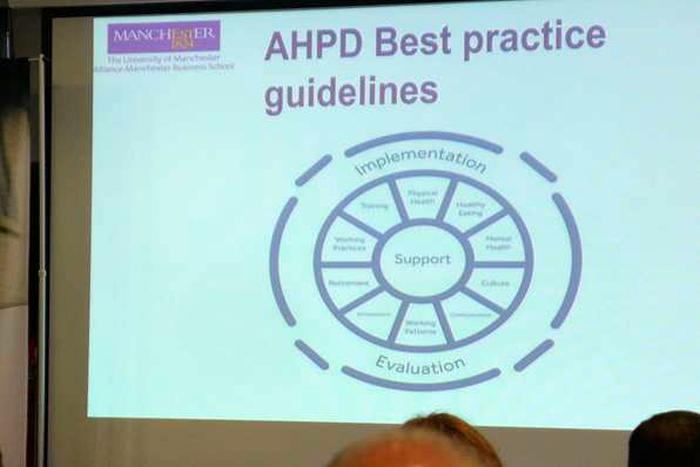
AHPD Best Practice Guidelines. The wheel graphic. www.ambs.ac.uk/ahpdn
Mental health, Physical Health, Healthy eating, Working practices, Bereavement is a key impact on an ageing workforce. How do you offer support to older drivers suffering bereavement anxiety? It has effect across health and driving safely.
Nina Day , policy advisor HSE.
Managing transport safety to reduce risk.
Road transport is key to the UK economy but health and safety should not be a burden, it should be managed. So how can you manage risk?, we want you to be sensible, think about what you do, provide training, don’t overload and check drivers have the correct licence for the vehicle. Make sure equipment is appropriate, throw away old straps. Workplace overhaul accounts for half the RIDOR incidents.
From a legal perspective, everyone has responsibilities for safety, from loading to driving. Safe transport starts at the top, everyone has to be part of the safety culture. You may have a no-phone policy when driving, but does your office call a driver when they are on shift?’
Ruth Waring, director, BigChange Advisory Plus,
Using technology to improve fleet compliance.
I am a transport expert and work on fleet compliance. I have been in the sector over thirty years. Don’t just give someone a driver handbook and hope for the best. Fleet compliance for HGV and PCVs is clear with O licence. Vans and cars must also comply, they must comply with HSE Driving for work guidance & provision and use of work equipment regulations.
As an industry we should look at technology to help us, real-time tracking checking speeding is becoming the norm in commercial fleets. Fitness to drive is often overlooked, build in a question on fit to drive into your app for the daily vehicle walk-round check. Mobile phone use creates so many distractions, there are many apps to control and block mobile phone use in vehicles.
Driver apps for lone worker safety in in vulnerable situations have moved on. Weather alerts, red and amber warnings, get the knowledge to your drivers, deal with alerts for wind on high vehicles. There are lots of great apps out there, use the apps.
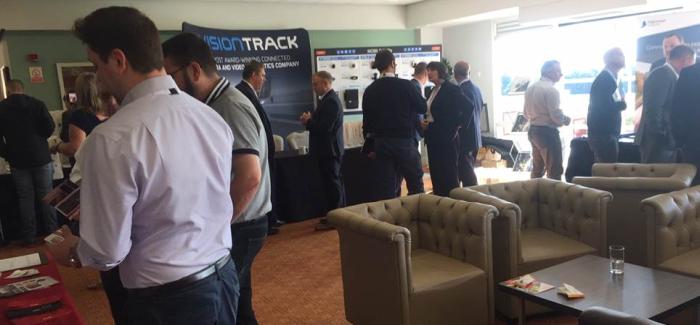
Haydock Park road safety with Highways England Oct 2nd
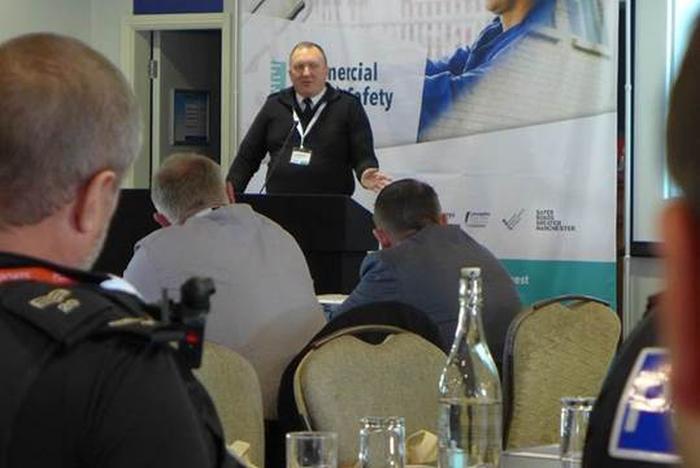
Inspector Keith Kellett Mersyside Police using enforcement to achieve compliance
